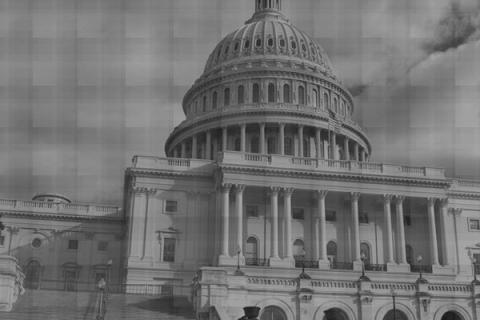The Golden State is at the leading edge of the most recent recession. The national unemployment has risen to at least 7.2 percent, and the rate is much higher (8.4 percent) here in California. Unfortunately, things will continue to get worse before they get worse before they get better.
California’s unemployment rate is almost sure to hit double digits some time in 2009. State budgets have been terribly strained by the ongoing financial crisis and recession. The combination of falling real estate prices and a precipitous decline in the stock market have caused property and income tax collections to shrink drastically, tearing a hole in California’s budget so big the governor could drive his hydrogen powered hummer through it.
As President Obama and Congressional leaders prepare for another round of stimulus, virtually every state government is considering spending cuts and tax increases. The latest stimulus package proposal has a price tag of $825 billion, $550 billion in new spending and $275 billion in tax credits. The stated goal for a stimulus package is massive Keynesian pump priming, modeled after similar, successful efforts in the US and UK in the midst of the Great Depression. The theory goes that every dollar the federal government spends will be be spent again by consumers or businesses, creating a “multiplier effect” that ripples throughout the whole economy. Direct spending has a higher multiplier effect than direct tax cuts because some of the economic impact is lost due to household savings with each successive ripple.
Almost every state (Vermont is the only exception) is required to balance its budget, so a large mid-year deficit means huge spending cuts or tax increases. California has the ominous task of plugging a $42 billion shortfall, and other states, especially those along the Rust Belt have equally difficult challenges. We might very well see the impact of a federal stimulus packaged dampened or even negated entirely, by corresponding state budget cuts. To avoid this, more direct relief for states should be included.
Congressional leaders would do well to reallocate these monies towards direct aid for states. The latest plans are better than the initial ones; $90 billion out of the most recent plan is targeted toward state Medicaid plans, and $79 billion is allocated to states to prevent cuts in education.
Although it is on the right track, it will not do enough. Instead of treating the symptoms of state budget woes by spending more on Medicaid or schools, money should be given directly to the state treasuries. In California, this could head off a big hike in the state sales tax, massive cuts to schools, and the delaying of many infrastructure projects. Instead of an overly-complicated stimulus bill with 100 subsections, Congress should cut a check directly to every state, with no strings attached. A formula using state unemployment rates and per capita income could be created so that needy states would get enough, and California would rightly get a lot, even on a per citizen basis.
A federal bailout of the states is a wise decision because the federal government can borrow more cheaply than the states. So giving money to beleaguered states not only accomplishes the goal of Keynesian fiscal policy, and it does so relatively more cheaply. Debt sold by the federal government, in the form of Treasury notes, bills, or bonds, is used as a safe harbor in a tough or uncertain investing climate. That’s why the federal government can currently borrow at less than a 3 percent interest rate for a 30 year loan, much better than any individual state could do.
Signing a stimulus package into law will be one of the first acts of President Obama. It is important that it be done right, shifting aid to address state fiscal woes and prevent paralyzing cuts. The future of California depends on it.
